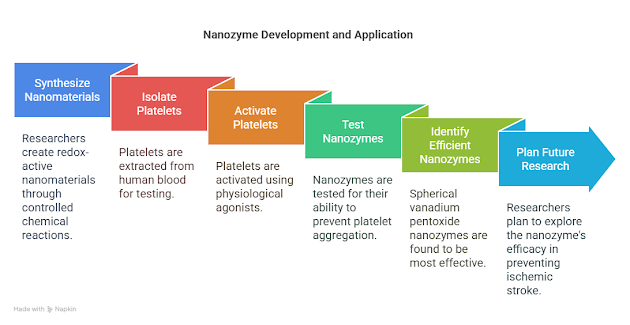Researchers at the Indian Institute of Science (IISc.) have developed an artificial metal-based nanozyme that can potentially be used to clamp down on abnormal blood clotting caused by conditions like pulmonary thromboembolism (PTE).
Blog Archive
Wednesday, June 4, 2025
Artificial metal-based nanozyme that prevents excess blood clotting
Subscribe to:
Post Comments (Atom)
Census of India 2027: India’s First Digital Census — A Comprehensive Overview for UPSC Aspirants
Census of India 2027: India’s First Digital Census — A Comprehensive Overview for UPSC Aspirants The Union Cabinet, chaired by the Prime ...
-
UPSC Prelims 2025 Answer Key GS Paper 1 – UPSC Prelims 2025 Solution GS Paper 1 Question 1. Consider the following types of vehicles...
-
Q How will India effectively address the growing economic and social burden of dementia? Ans Addressing the growing economic a...
-
How to become IAS officer after 12 th ? In our nation, one of the most important and renowned positions is in the Indian Administrative ...

According to IISc., under normal circumstances, when a blood vessel is injured, specialised blood cells called platelets get activated, and cluster together around the vessel to form protective blood clots.
ReplyDeleteThis process, known as the blood clotting cascade (haemostasis), involves a complex series of protein interactions triggered by signals from physiological agonists (chemicals), such as collagen and thrombin.
However, when these signals go haywire in conditions like PTE or diseases like COVID-19, oxidative stress and levels of toxic Reactive Oxygen Species (ROS) increase, leading to over-activation of platelets. This triggers the formation of excess clots in the blood vessel, contributing to thrombosis, a major cause of morbidity and mortality.
ReplyDeleteTo tackle this challenge, researchers led by G. Mugesh, Professor in the Department of Inorganic and Physical Chemistry, have developed nanomaterials that mimic the activity of natural antioxidant enzymes, which scavenge reactive oxidative molecules. These nanozymes work by controlling ROS levels, thereby preventing the over-activation of platelets that leads to excess clot formation or thrombosis.
ReplyDeleteThe team synthesised redox active nanomaterials of different sizes, shapes, and morphologies via a series of controlled chemical reactions starting from small building blocks.
ReplyDeleteThey then isolated platelets from human blood, activated them using physiological agonists, and tested how effectively the different nanozymes could prevent excess platelet aggregation.
The team found that spherical-shaped vanadium pentoxide (V2O5) nanozymes were the most efficient.
ReplyDeleteThe team now plans to explore the efficacy of the nanozyme in preventing ischemic stroke, which is also caused by clogging of blood vessels.